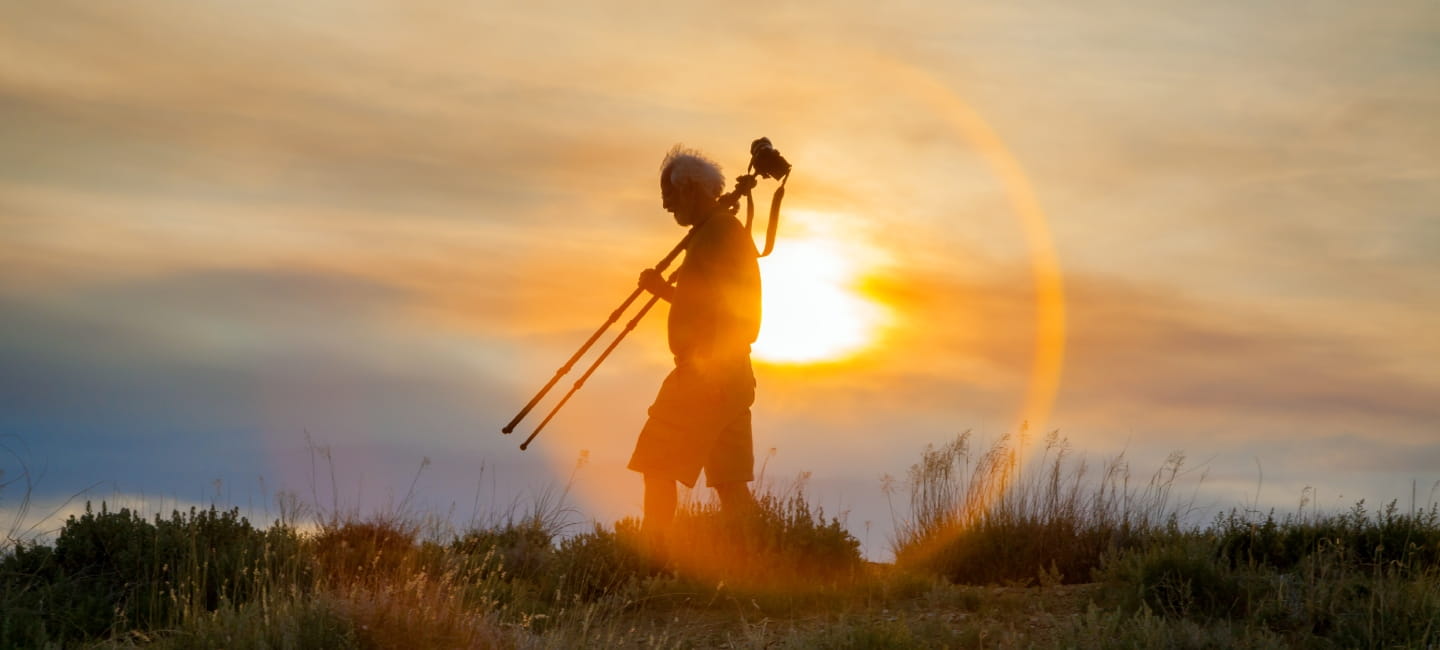
There’s a beauty to photography – whether that’s capturing memories or preserving moments of wonder or historical significance – that entrances millions.
And, with the advent of the smartphone, and its ever-increasing photographic power, picking up the hobby is easier than ever.
If you’ve been quietly building a decent portfolio of work or are just enticed to upgrade your camera and start snapping in earnest, you might be wondering if your skills could lead to an income.
Well, it's easy to share your photos online, and potentially sell your best work to make money from your photos.
However, let’s not get ahead of ourselves – it's tough to make an income from photography, and the graft can be hard even getting to that point.
That said, even if you don't make a fortune, learning what sells - and what doesn’t - can give structure and challenge to your picture taking, and expose you to styles you’ll have never encountered before, bringing a new enjoyment to your hobby.
One of the great things about photography is the variety. You might enjoy working with people and taking individual or family portraits, or prefer photographing wildlife, nature or your travels. Alternatively, you can offer your services for weddings and other events.
But, if you want to turn a hobby into a business or side hustle, you need to know one thing: selling photos is more about perspiration than inspiration, and good networking and marketing often outweigh talent.
That means understanding the different photography markets that could offer an income: stock photography libraries, publishers, competitions, galleries or simply selling framed prints to the public.
Choosing things or events to photograph that you love will, therefore, give you a big boost – even if you don’t make any serious money selling your work, by honing your style to compete with other sellers, you might find new ways to enjoy your subjects you’d never thought possible.
Iain McLean is a professional photographer who's worked in newspapers, magazines, sports photography and more.
While changes in the industry don’t make it easy for new photographers, he believes there are still some opportunities.
"Magazines still pay for submissions, local press less so," he says. "For example, it could be worth sending photos of your [animals] to pet magazines, and if you have a story to go with the images that's even better: it's very appealing for publishers to have a package."
For a long time, photographers have sold photos as ‘stock photography’, which is where images for brochures, adverts and websites often come from.
The benefit for photographers is that you can submit photos of anything you like; the downside is that it's hard to get noticed amidst the millions of other pictures vying for attention.
The market is changing, as McLean explains: "There are [stock image libraries] who will do the selling for you such as Alamy, Shutterstock or iStock, but the market has diminished hugely in recent years; sales from agencies can yield a healthy amount or sometimes just pennies."
Free sites such as Pexels.com, which don't charge companies for using many of their images, are competition for the paid-for image libraries – and they don't pay the photographers either (although they can receive tips or donations if people like what they see).
The other, growing, threat is from artificial intelligence (AI). While this technology is still in its relative infancy, and often doesn’t have the professional sheen of high-quality photography, it’s a low-cost way of generating almost unlimited images.
As such, it’s likely to keep muscling in on the world of stock photography as users can simply define what they want to see and have it created (and tweaked to their liking) instantly.
McLean suggests promoting your work as "authentically non-AI", which may well become a positive selling point in the future and make it clear that what you’re selling is something from a genuine moment.
There are also a lot of photographers out there, and that can make it hard to stand out. "It helps if you have a niche," he adds.
"A great example is my colleague Alasdair MacLeod who produces some beautiful time lapse photos and film, but you may be interested in architecture, street photography, football, landscapes or portraits."
McLean himself has been developing a more painterly approach to his landscape photography. “Try and develop your own style, something to make you stand out from the rest," he suggests.
Another way to make money is to enter reputable competitions. Of course, beware those you've never heard of, charge massive entry fees or ask you to sign over the ownership of your images.
McLean recommends prestigious awards such as the UK Landscape Photographer of the Year competition as a good place to start instead.
You may also find that local organisations are interested in showing and maybe selling prints of your work. "One approach is to photograph the local area and supply the images to a local gallery," McLean says.
Local cafes and independent retailers might also be willing to showcase your work on their walls and potentially sell them to customers.

When you take a photo, you own the copyright - that’s the legal right to make, distribute or sell copies of that photo. In the UK, copyright exists until 70 years after the photographer dies, and it ‘s in force from the moment you press the camera shutter.
When you sell a photo, you don't sell your copyright – or at least, you shouldn't. What you do instead is sell your photo with very specific rights.
For example, let's say you've taken an amazing photo of a local landmark. You could sell different rights to different publications, such as:
Three sales, three fees... great news. But you can only do that if you don't sell your entire copyright, and sadly some publications and websites will try to get you to do just that.
Photographer Jemma Watts has put together a great guide to photographers' copyright on the 91 Magazine website, although do make sure you consult a legal professional versed in copyright law if you’re unsure over ownership.
It's also important to note that you cannot distribute or sell photographs or images that you don't own the copyright to.
That doesn't just mean other people's images but can also pertain to photos you were specifically hired to take as well.
Unfortunately, not everybody on the internet knows (or cares) about copyright, and many photographers find that images they post on social media end up re-shared without credit – or worse, sold.
You can avoid that by applying a watermark to your images. This is a visual mark that shows it's your work, and you can add it in almost any photo editing program.
Despite the downsides, "social media is a great place to build a following," McLean says. "Keep your posts short and snappy and don't be afraid to share techniques, or your influences – and most importantly, links to let people buy your work."
Creating your own website gives you a place to showcase your wares through an online portfolio, which is a promotional tool where you can also add an online shop to sell your snaps too.
Many places where you can build a website offer online shop add-ons, and there are dedicated products that are created to help you sell your photos – although these often come with a monthly subscription or other cost attached. Design site Creative Bloq has a good round-up of the available options.
You might want to sell your work in a variety of formats, and the good news is this can be done on demand, so you don’t have to worry about investing in 10,000 badges that nobody then buys.
Print-on-demand companies can put your work on almost anything from stickers to canvases and framed photo prints. They do everything for you from printing to posting and provide a marketplace where you can sell your items.
However, they can be expensive, charging a base price to list and create your product, and then you’ll need to add your profit (and any taxes) on top, so it can be a little expensive.
When it comes to selling your photography, it’s important to not be disheartened if your sales aren’t stellar. Focusing on what you like to take pictures of, and finding ways to improve your technique, can be more rewarding than tweaking your marketing skills.
However, if you can combine both, then you might find you’ve got a side (or full) business on your hands. "Believe in your work, be a shameless promoter and networker and work hard,” says McLean.
It helps to be realistic too. "Personally I have a very low bar," he adds. "If I can sell enough to cover costs for an exhibition or for one of my football photo journals then I'm more than happy... have a thick skin and don't take 'no' for an answer. Don't give up!"
Perhaps, most importantly, don’t lose sight of what made you want to pick up a camera in the first place: like music or painting, photography was an art form long before it became a business.
Selling photos is great, but the real joy of photography is in capturing that place, space or face in the way that only you can do. And that's priceless.

There’s billions sitting unclaimed in shares and dividends – find out if any belongs to you.

From their first savings account to their first home, find out how your gifts can make the biggest impact for your grandchildren
.jpg?la=en&h=354&w=616&hash=653168623B92F3457D40ACA115D37B3E)

.jpg?la=en&h=354&w=616&hash=458B0288E9852F4B63A433E2FDD375E7)



We're here to help you make the most with your money. With a rage of financial services designed with over 50s in mind.